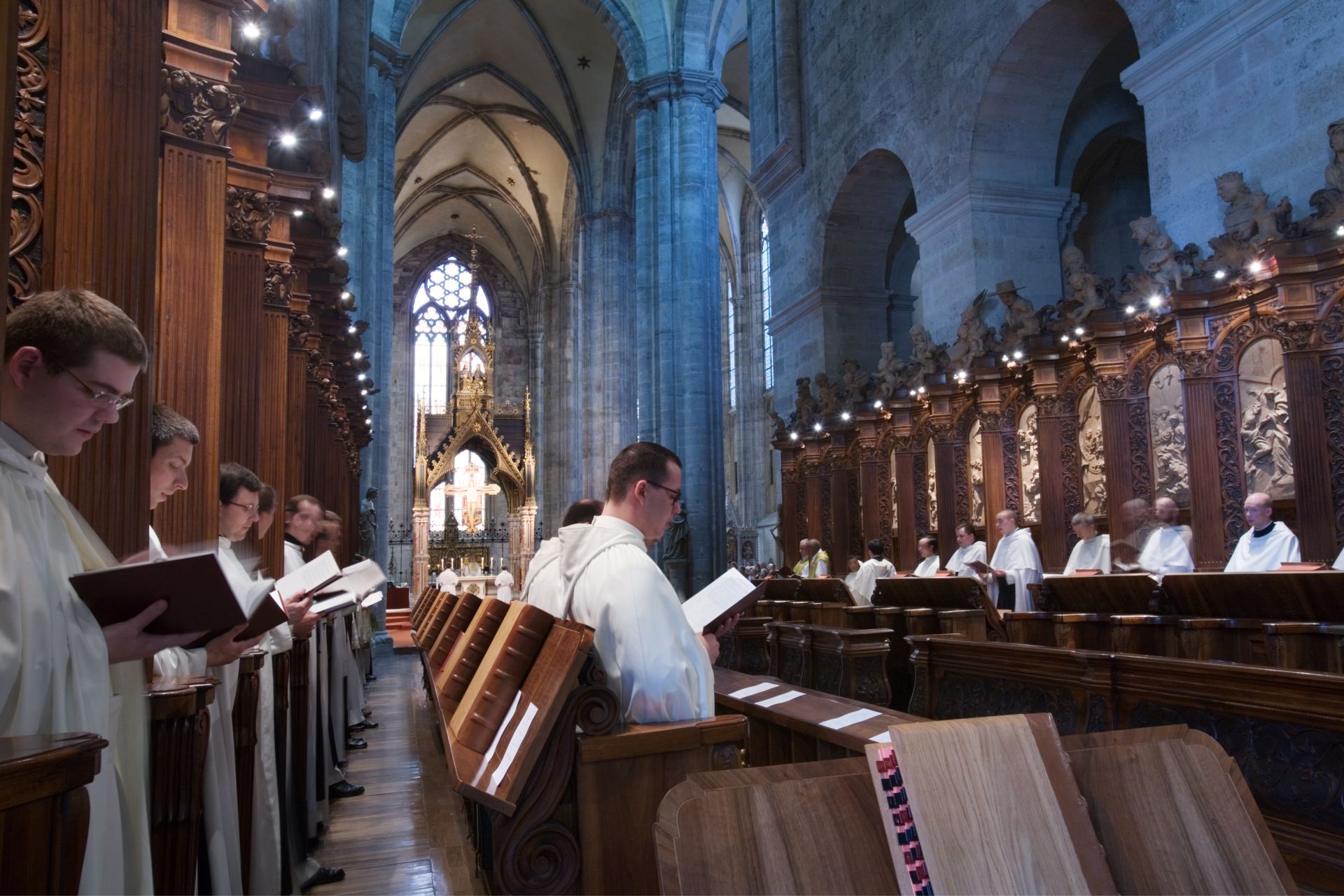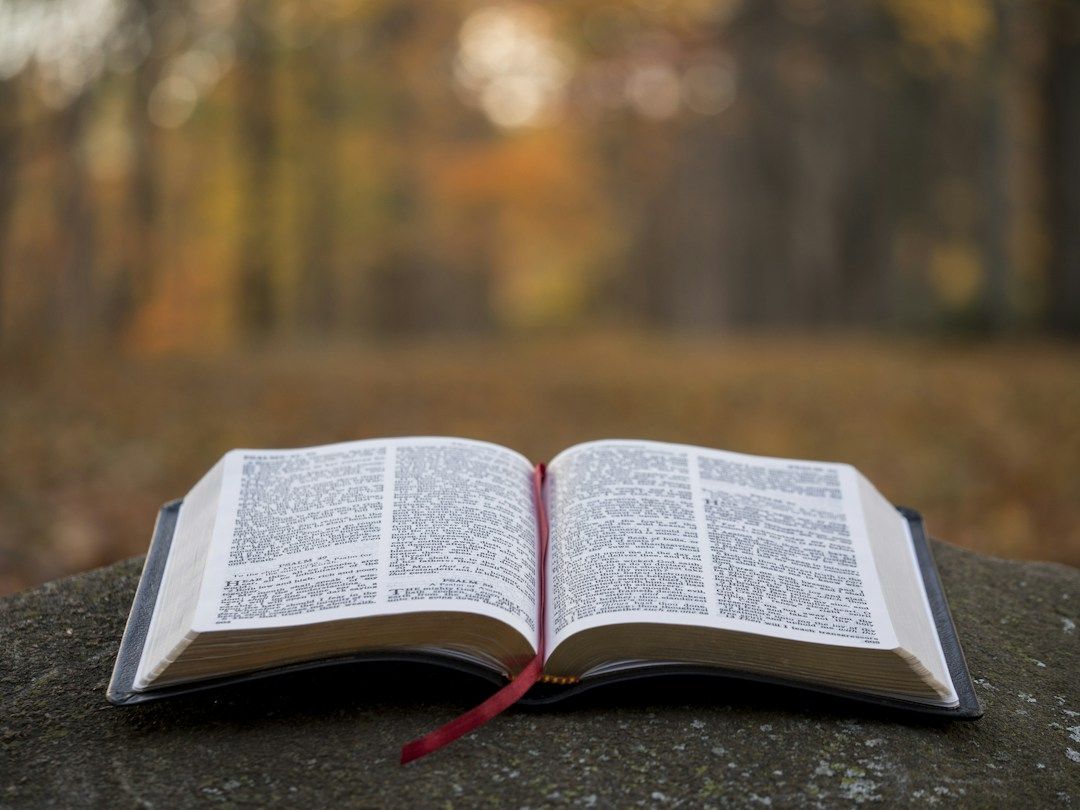
First Week of Lent
The Liturgy and Spiritual Warfare
"Liturgy" is the public, official, communal prayer of the Church. When we think of liturgy, the Mass is typically the first thing that comes to mind. Undoubtedly, the Mass is the most important liturgy of the Church, and the highest form of prayer. We'll explore its connection to spiritual warfare in the Fifth Week of Lent.
The word "liturgy" might also bring to mind baptisms, weddings, and funerals celebrated outside the Mass. But there is (and always has been) much more to the public, official prayer of the Church. Meet the Liturgy of the Hours! The Church has liturgical prayer seven times every day. Each liturgical hour is made up a psalms, hymns, and other prayers. Priests and religious are obligated to pray the Liturgy of the Hours, and the Church encourages the laity to pray it too, especially Morning and Evening Prayer.
The Liturgy of the Hours helps us to "pray without ceasing" (1 Thessalonians 5:16), constantly training ourselves to oppose evil and promote the Gospel in our lives and in the world. Think of it as the Church's training regimen for spiritual soldiers.
Below is some background from the General Instruction on the Liturgy of the Hours. Then there's a list of different ways you can access the Liturgy of the Hours to pray on your own, with your family, or in other groups.
The word "liturgy" might also bring to mind baptisms, weddings, and funerals celebrated outside the Mass. But there is (and always has been) much more to the public, official prayer of the Church. Meet the Liturgy of the Hours! The Church has liturgical prayer seven times every day. Each liturgical hour is made up a psalms, hymns, and other prayers. Priests and religious are obligated to pray the Liturgy of the Hours, and the Church encourages the laity to pray it too, especially Morning and Evening Prayer.
The Liturgy of the Hours helps us to "pray without ceasing" (1 Thessalonians 5:16), constantly training ourselves to oppose evil and promote the Gospel in our lives and in the world. Think of it as the Church's training regimen for spiritual soldiers.
Below is some background from the General Instruction on the Liturgy of the Hours. Then there's a list of different ways you can access the Liturgy of the Hours to pray on your own, with your family, or in other groups.

Public and common prayer by the people of God is rightly considered to be among the primary duties of the Church. From the very beginning those who were baptized "devoted themselves to the teaching of the apostles and to the community, to the breaking of the bread, and to prayer" (Acts 2:42). The Acts of the Apostles give frequent testimony to the fact that the Christian community prayed with one accord.
The witness of the early Church teaches us that individual Christians devoted themselves to prayer at fixed times. Then, in different places, it soon became the established practice to assign special times for common prayer, for example, the last hour of the day when evening draws on and the lamp is lighted, or the first hour when night draws to a close with the rising of the sun.
In the course of time other hours came to be sanctified by prayer in common. These were seen by the Fathers as foreshadowed in the Acts of the Apostles. There we read of the disciples gathered together at the third hour. The prince of the apostles "went up on the housetop to pray, about the sixth hour" (10:9); "Peter and John were going up to the temple at the hour of prayer, the ninth hour" (3:1); "about midnight Paul and Silas were praying and singing hymns to God" (16:25).
Such prayer in common gradually took the form of a set cycle of hours. This liturgy of the hours or divine office, enriched by readings, is principally a prayer of praise and petition. Indeed, it is the prayer of the Church with Christ and to Christ.
The witness of the early Church teaches us that individual Christians devoted themselves to prayer at fixed times. Then, in different places, it soon became the established practice to assign special times for common prayer, for example, the last hour of the day when evening draws on and the lamp is lighted, or the first hour when night draws to a close with the rising of the sun.
In the course of time other hours came to be sanctified by prayer in common. These were seen by the Fathers as foreshadowed in the Acts of the Apostles. There we read of the disciples gathered together at the third hour. The prince of the apostles "went up on the housetop to pray, about the sixth hour" (10:9); "Peter and John were going up to the temple at the hour of prayer, the ninth hour" (3:1); "about midnight Paul and Silas were praying and singing hymns to God" (16:25).
Such prayer in common gradually took the form of a set cycle of hours. This liturgy of the hours or divine office, enriched by readings, is principally a prayer of praise and petition. Indeed, it is the prayer of the Church with Christ and to Christ.

A book containing the Liturgy of the Hours is called a breviary. You can purchase copies online or in religious goods stores that either have all the hours or only Morning and Evening Prayer. The Liturgy of the Hours is also accessible digitally through a number of different sources:
- iBreviary: The mobile app and website are both free to use.
- Praystation Portable: This is a free podcast of the complete Liturgy of the Hours each day.
- Universalis: The website is free; the app is available for a small fee.
- Laudate: This app is available for free for Apple and Android devices.
- Divine Office: The website is free when you register, and it also has options for hard copy breviaries.
- How to Pray the Liturgy of the Hours: This video is a step-by-step guide to praying with a hard copy breviary.
- A beginner's guide to the Liturgy of the Hours: This article will help you learn to use a hard copy breviary to pray the hours.
Grant, O Lord, that we may begin with holy fasting this campaign of Christian service, so that, as we take up battle against spiritual evils, we may be armed with weapons of self-restraint.
This collect prayer begins the Mass for Ash Wednesday, the first day of Lent. Jesus is calling us to "take up battle against spiritual evils." We'll explore fasting itself in a few weeks; during the week of Ash Wednesday, we're going to dig into an important set of weapons the Lord gives us to fight evil: sacramentals.
What's a sacramental? Well, if you attend Mass on Ash Wednesday, you're probably going to receive one on your forehead.
This collect prayer begins the Mass for Ash Wednesday, the first day of Lent. Jesus is calling us to "take up battle against spiritual evils." We'll explore fasting itself in a few weeks; during the week of Ash Wednesday, we're going to dig into an important set of weapons the Lord gives us to fight evil: sacramentals.
What's a sacramental? Well, if you attend Mass on Ash Wednesday, you're probably going to receive one on your forehead.

A Ministry of Our Lady of the Lake Catholic Church
480 152nd Avenue, Holland, MI 49424
lanecatholic@oll.org
Privacy Policy and Terms of Use
Copyright © 2025